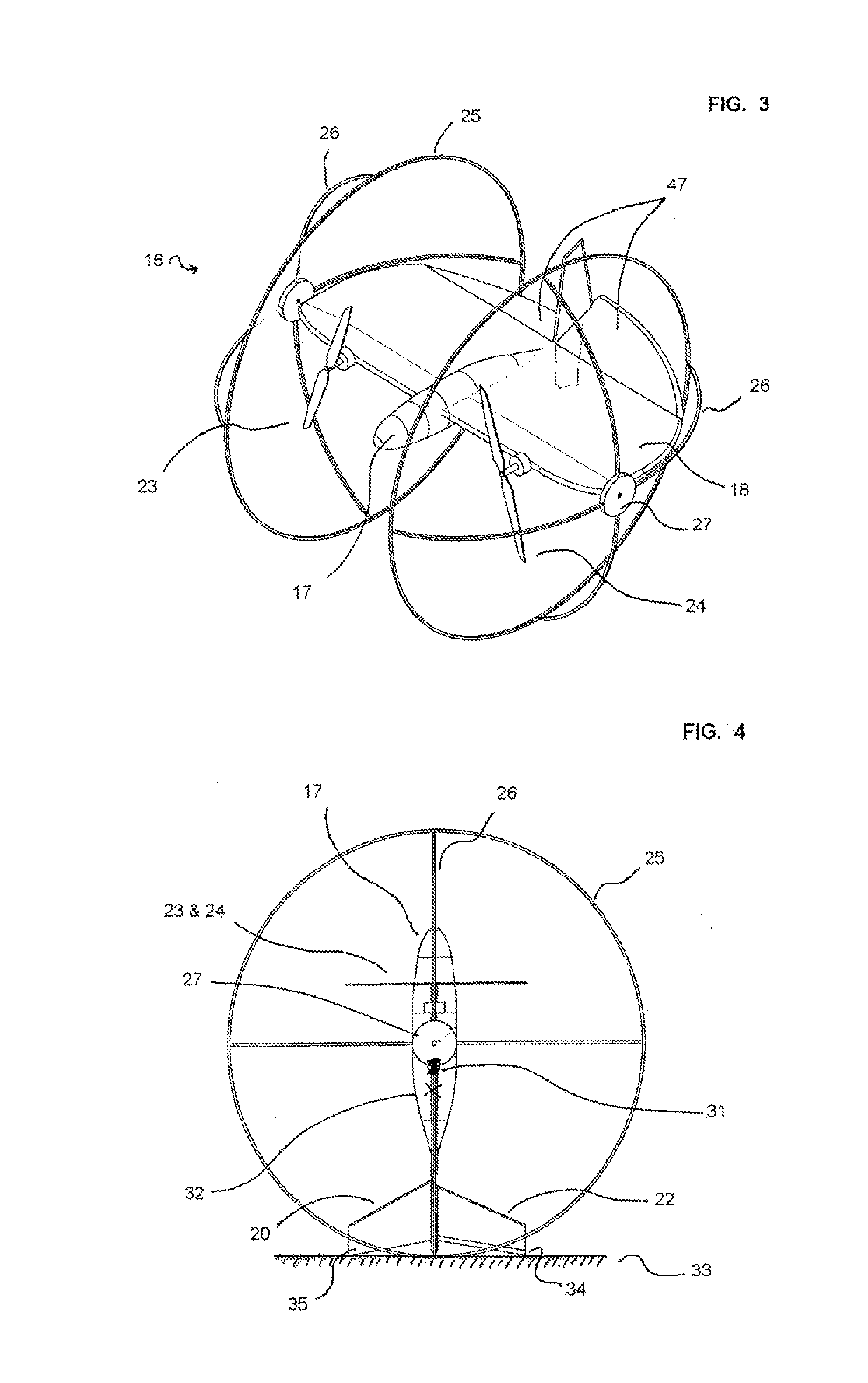Remotely controlled micro/nanoscale aerial vehicle comprising a system for traveling on the ground, vertical takeoff, and landing
a technology of remote control and aerial vehicle, which is applied in the direction of micro-sized aircraft, wheel arrangements, transportation and packaging, etc., can solve the problems of multi-mission requirements now emerging, and none of these conventional configurations being entirely satisfactory, and achieves the effect of convenient control
- Summary
- Abstract
- Description
- Claims
- Application Information
AI Technical Summary
Benefits of technology
Problems solved by technology
Method used
Image
Examples
Embodiment Construction
[0047]As shown in FIGS. 1 and 2, a taxiing drone 16 according to the invention comprises, principally, a microdrone 40 to which is fitted a taxiing and protection device 39.
[0048]In the present text, a microdrone is to be understood as a remote-controlled or autonomous flying vehicle, generally having a wingspan of several tens of centimeters. The following description also applies to the case of nanodrones, whose wingspan is generally less than ten centimeters.
[0049]The following are defined for the remainder of the description:[0050]a longitudinal axis X located in a horizontal plane and in line with the direction of motion of the microdrone 40;[0051]a transverse axis Y located in the horizontal plane and perpendicular to the longitudinal axis X;[0052]a vertical axis Z which completes this reference frame.
[0053]The terms “forward”, “rear”, “upper”, “lower”, “left, “right” etc. will be defined with reference to these axes in the remainder of the description.
[0054]The microdrone 40 ...
PUM
 Login to View More
Login to View More Abstract
Description
Claims
Application Information
 Login to View More
Login to View More - R&D
- Intellectual Property
- Life Sciences
- Materials
- Tech Scout
- Unparalleled Data Quality
- Higher Quality Content
- 60% Fewer Hallucinations
Browse by: Latest US Patents, China's latest patents, Technical Efficacy Thesaurus, Application Domain, Technology Topic, Popular Technical Reports.
© 2025 PatSnap. All rights reserved.Legal|Privacy policy|Modern Slavery Act Transparency Statement|Sitemap|About US| Contact US: help@patsnap.com



